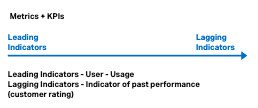Process
Research
Step 1
DefineResearch scope | Clear deliverables| Set objectives | Form hypothesis
- What is our end goal?
- What are you going to do with this information?
- What decisions is it going to inform?
- How are you going to leverage these insights?



Step 2
ObjectivesUnderstand audience, ask, and landscape
-
Discuss/understand Personas
-
Answer the 5 questions:
1. How can you help?
2. Who are the users you are designing this for?
3. What problems and needs do they have?
4. What are the pain points using the product?
5. Why are they not using it?
OKRs | Objectives & Key Results
1. Problems & Opportunities
• What is the problem?
• Where are the opportunities?
• If you solved these problems or exploited these opportunities,
which would benefit your organization the most?
2. Choose a problem or opportunity
This is your objective
• Write a statement that describes the outcome fixing the problem
“Reduce the time it takes to place order”
3. Identify metrics
• If you achieve your objectives, what would change in the outside world?
How could you measure it?
• Identify metrics – look for leading indicators of success. Identify things you can measure


Step 3
Discovery & BrainstormConceptual Designs and ideas with hypothesis

Problems or Solutions – Identify potential problems or pain points you know your customers have and list out solution ideas you have already thought about or heard suggested. Jeff mentions you often hear about a feature or idea first, so if you are starting with a solution think about the problems that solution addresses.
Users and Customers – Identify whom your users and customers. These could be two different audiences for your company. Hopefully, you are already using personas making this part easy.
Solutions Today – List out how your users and customers are solving these problems today. Is there a workaround in the software or product that eventually solves it? Can they solve this problem via a different, perhaps less convenient, channel today?
User Value – What will your users and customers get from having this solution or problem solved? Think beyond just “it will be easier to do” to the additional time they will have to build their relationships with their clients if this task was quicker.
User Metrics – If you implement this solution what could you track to ensure this is delivering value? It is a good idea to think about this two ways – how you will know what you implemented is making a difference, and you should iterate further. As well as how you will know this is not helping customers, and maybe it should be cut.
Adoption Strategy – Think through releasing this new solution and how you will let customers and users know it is available. This could also include possible training videos or materials needed to take advantage of the new solution too.
Business Problem – You have talked a lot about your users’ and customers’ problems already, but what about your own business? What problems could this help solve internally? Could it reduce the number of support calls? Could it reduce call times because representatives do not have to talk through the workaround?
Business Metrics – For those business problems you identified, how can you prove this solution is helping to solve them? Remember, identify metrics in both directions – what success looks like and what failure looks like.
Budget – How much time, money, people, and other resources will this solution require? This is a good time to think about inter-team dependencies that might disrupt a solution another team is building.
Summarize your idea using a hypothesis statement
We believe
These users…
Have
These problems…
If we build
This solution…
They will
Get this obvious benefit…
Resulting in
This measurable outcome…

Step 4
DeliverSolutions & Testing


Step 5
Follow upListen to feedback & review results
- Track via analytics
- Customer interviews / satisfaction surveys
- Bug review
- Internal analysis







